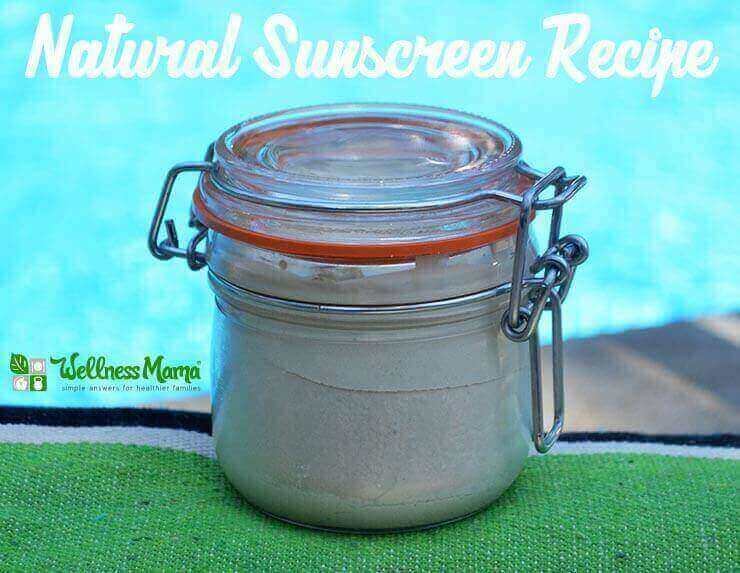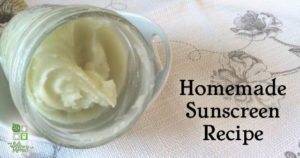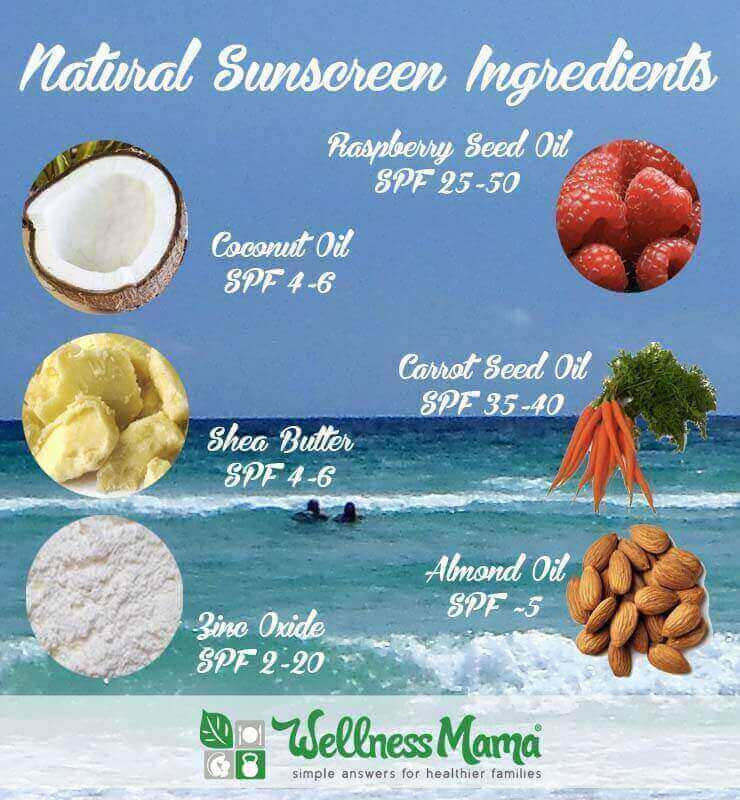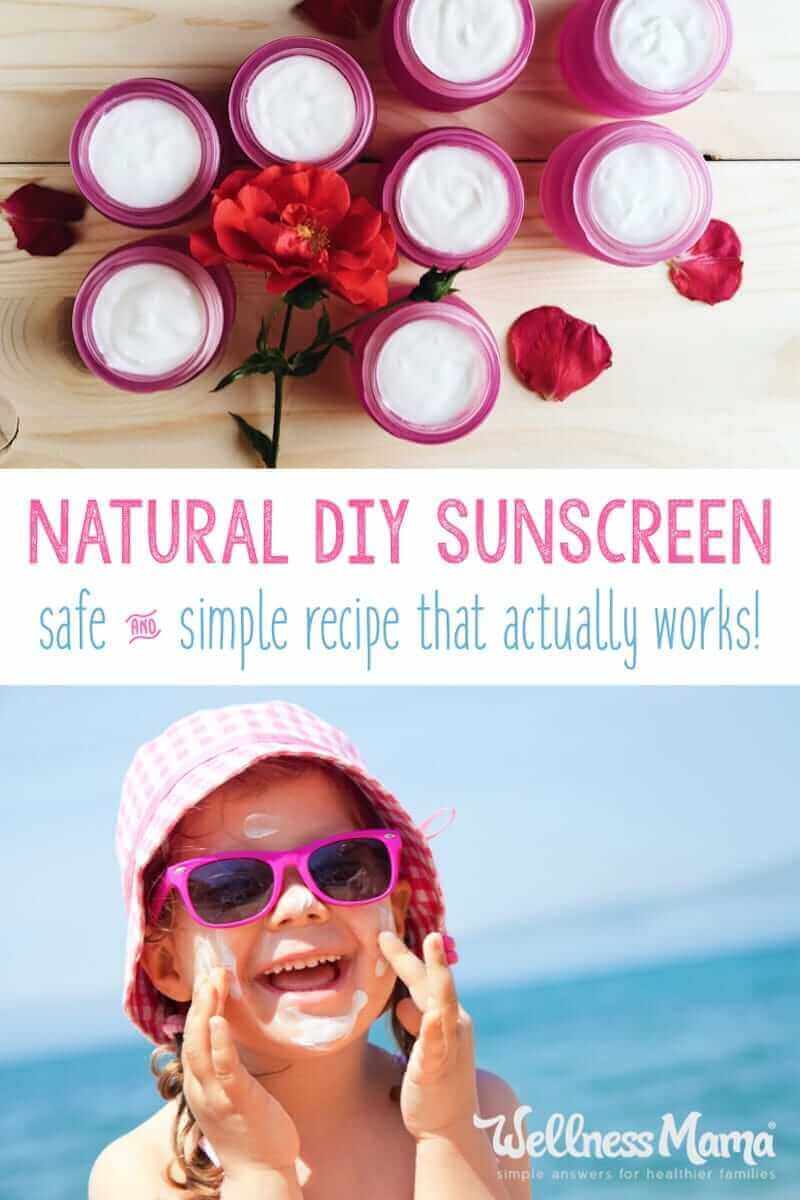

In the book Zero to One, Peter Thiel asks readers to consider what views/truths they believe that very few people agree with them on. For me, one such belief is that most sunscreen is not helpful in avoiding skin cancer and may actually increase the chances of it!
Sound crazy?
It certainly isn’t a popular opinion, and I’m certainly not encouraging you to not wear sunscreen or to ignore the advice of your doctor. I am, however, encouraging you to do your own research, look at the actual studies and use common sense when it comes to sun exposure.
Certainly, sunburn is harmful. But sunscreen isn’t the only way to avoid it.
The Problem of Sunscreen
Many sunscreens contain toxic ingredients or endocrine disrupting chemicals that in many cases may actually promote skin cancer growth and free radical production in the body.
In fact, in the years since sunscreen use began, skin cancer rates have actually risen, and a 2007 document from the FDA stated that: “The FDA is not aware of data demonstrating that sunscreen use alone helps prevent skin cancer” In fact, many reports show that most sunscreens actually raise skin cancer risk.
Even natural, commercially available sunscreens often have toxic ingredients! Check out your brand here!
Many sunscreens also contain Oxybenzone, a known hormone disruptor that is not recommended for use on children.
Think about this:
Vitamin D= necessary for correct hormone formation. Sunscreen ingredients like Oxybenzone= endocrine disruptors that inhibit correct hormone formation. Starting to see the reason some sunscreens may do more harm than good?
The Environmental Factor
My husband and I are PADI certified SCUBA divers and the dive world is also aware of the problem with most sunscreens for different reasons…
Recent research is showing compounds in many types of sunscreen harm ocean life, especially coral. This is because these compounds may awaken dormant viruses in symbiotic algae called zooxanthellae. These Zooxanthellae algae provide food and color to the coral. Sunscreen chemicals cause the dormant viruses in these Zooxanthellae to replicate until the algae host dies. This, in turn, causes the coral to die.
Researchers estimate that over 5,000 metric tons of sunscreen wash off of swimmers each year. This “swimmer pollution” threatens a large part of the coral life in the ocean and indirectly many other ocean species as well.
 The Vitamin D Factor
The Vitamin D Factor
Considering many people these days are actually Vitamin D deficient, I personally consider lack of sun exposure to be a much bigger problem than too much sun exposure.
Vitamin D deficiency has been linked to many types of cancers including the most deadly types of breast cancer. Lack of Vitamin D has also been linked to problems during pregnancy including pre-eclampsia, gestational diabetes, premature labor, and more.
As a society, we’ve literally cut off our nose to spite our face when it comes to sun exposure. To avoid skin cancer, we’ve shunned the sun and the Vitamin D our bodies produce with sun exposure.
On top of that, sun exposure itself is not the only factor linked to skin cancer, and many other factors, such as Omega-6 Vegetable Oil consumption can have a big impact on skin health!
I don’t buy the idea that even moderate sun exposure is harmful when our bodies need Vitamin D and light exposure for so many aspects of health.
A Common Sense Approach to Sun
In most cases, my approach to sun exposure is to get adequate daily exposure, without getting close to the point of burning. Since most of us don’t work outside these days, it actually takes effort to get daily sun, rather than to avoid it. I certainly don’t slather on the coral-destroying sunscreen in the off chance I might encounter a few stray rays of sunlight!
In fact, thanks to 23 and Me, I know that I have mutations that make it very difficult to get enough Vitamin D. This puts be at risk for a lot of serious diseases and taking supplements doesn’t work very well to raise my levels. For this reason, my doctor advised me to get adequate vitamin D… from sun exposure.
Of course, there is a limit to how much sun a person needs or should get. When I reach this limit, I:
Use the Shade…
In the event that I’m going to be out in the sun for much longer than my skin is used to, it is often easy enough to just put on a hat or shirt to shield my skin. This is the approach that the Environmental Working Group recommends. It is more effective at stopping excess sun exposure, costs less and doesn’t harm the ocean. A common sense win:win.
Use Natural Sunscreen
If I’m going to be in intense sun and can’t easily cover up when I’ve gotten enough sun, I will very occasionally use natural sunscreen. I’m yet to use it this year, and hope not to at all, but I wanted to share my recipe (and best picks for pre-made) so that if you are in the sun for extended periods of time this summer, you have a natural option.
This homemade sunscreen would also be a more natural alternative for really young children, those taking medication that increases sun burn risk, or those who burn very easily.
Just to clarify, even though this natural sunscreen smells great and is naturally moisturizing, I don’t recommend using it daily since the Vitamin D you get from the sun will be more beneficial in the long run!
Is Homemade Sunscreen Dangerous?
Several recent articles claim that homemade sunscreens are harmful and that a person should never consider making sunscreen. Their reasoning is that you can’t verify the SPF with homemade sunscreens so the chance of burning is higher.
I certainly agree that homemade sunscreens don’t have the lab testing that conventional ones do, but you know what else they don’t have? Endocrine disruptors and coral killing compounds. Also, sunscreen should be a last resort, according to the EWG, and shade and getting out of the sun are better options anyway.
So we shouldn’t use homemade sunscreens in the same way we use conventional. I’d also argue that we shouldn’t use conventional sunscreens in the way we do either.
Bottom Line: Use common sense and get safe sun exposure. The amount and safety varies by person and I definitely recommend doing your own research and talking to a knowledgeable naturopath to figure out what works best for you.
Choosing Natural Sunscreen Ingredients
Many of the ingredients in this recipe have a natural SPF (sun protection factor). This is a natural recipe and has not been tested by a regulatory organization for exact SPF. For this reason, I can’t (and don’t) make any claims or even guesses as to the combined SPF.
The individual ingredients are considered low SPF and generally quoted at these levels:
- Almond Oil- SPF around 5
- Coconut Oil- SPF 4-6
- Zinc Oxide SPF 2-20 depending on how much used
- Red Raspberry Seed Oil SPF 25-50
- Carrot Seed Oil – SPF 35-40
- Shea Butter – SPF 4-6
The final version will have a varied sun protective ability depending on the amount of each ingredient used. For a simple version, even just coconut oil and shea butter with a little Raspberry Seed and Carrot Seed Oil or some Zinc oxide will work for moderate exposure.
As always check with your doctor or dermatologist before using any new products.
NOTE: This is an improved recipe since many people were having trouble getting the temperatures exactly right to get the lotion to emulsify (as per the comments below). This recipe will not have any of those issues!
Homemade Sunscreen Ingredients
- ½ cup almond or olive oil (can infuse with herbs first if desired)
- ¼ cup coconut oil (natural SPF 4)
- ¼ cup beeswax
- 2 Tablespoons Zinc Oxide (This is a non-nano version that won’t be absorbed into the skin. Be careful not to inhale the powder).
- Up to 1 teaspoon Red Raspberry Seed Oil– optional
- Up to 1 teaspoon Carrot Seed Oil– optional
- 2 tablespoons Shea Butter (natural SPF 4-5)- optional
- Optional: Essential Oils, Vanilla Extract or other natural extracts to suit your preference (Do not use citrus essential oils as they increase sun sensitivity)
Homemade Sunscreen Instructions
- Combine ingredients except zinc oxide in a pint sized or larger glass jar. I have a mason jar that I keep just for making lotions and lotion bars, or you can even reuse a glass jar from pickles, olives, or other foods.
- Fill a medium saucepan with a couple inches of water and place over medium heat.
- Put a lid on the jar loosely and place in the pan with the water.
- As the water heats, the ingredients in the jar will start to melt. Shake or stir occasionally to incorporate. When all ingredients are completely melted, add the zinc oxide, stir in well and pour into whatever jar or tin you will use for storage.
- Small mason jars (pint size) are great for this. It will not pump well in a lotion pump!
- Stir a few times as it cools to make sure zinc oxide is incorporated.
- Store at room temperature
Additional Notes:
- This sunscreen is not waterproof and will need to be reapplied after sweating or swimming.
- Make sure not to inhale the Zinc Oxide- use a mask if necessary!
- Add more beeswax to make thicker sunscreen, less to make smooth sunscreen
- I recommend coconut or vanilla extract or lavender essential oils for fragrance
- Store in a cool, dry place or in the fridge
- I prefer to store in a small canning jar and apply like a body butter. It will be thicker, especially if you use coconut oil in the recipe.
- Remove the Zinc Oxide and this makes an excellent lotion recipe!
An Even Faster Way To Make Sunscreen
- Get a bottle of your favorite lotion (that doesn’t contain citrus oils!)
- Add a couple Tablespoons of non-nano Zinc Oxide
- Mix well
You can also make Sunscreen Bars by using many of the same ingredients and which are easier to apply!
Pre-Made Natural Sunscreens
I’ve also gotten some questions about pre-made sunscreen options for those who don’t have the time or desire to make a homemade version. The best brand I’ve found is Badger and they have several great organic, non-nano versions:
- Sport sunscreen: Badger Organic SPF 35
- For Baby: Badger Organic Baby Sunscreen SPF 30
- Kids Sunscreen: Badger Organic Kids Sunscreen Tangerine and Vanilla SPF 30
- Best smell (in my opinion): Badger Lavender Sunscreen SPF 30

What do you think? Avid sunscreen user or Vitamin D junkie?

Continue Reading...Natural Homemade Sunscreen Recipe
from Blog – Wellness Mama® https://wellnessmama.com/2558/homemade-sunscreen/
via SEO Derby
No comments:
Post a Comment